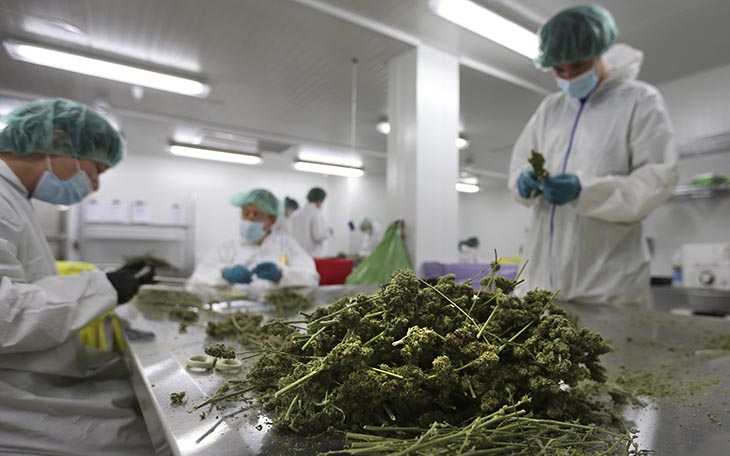Image via
Oregon cannabis regulators are implementing a new rule change that aims to stop testing labs from exaggerating the THC content of legal weed products.
Once the new rule takes effect on January 1st 2023, the Oregon Liquor and Cannabis Commission (OLCC) will be able to require any licensed cannabis business to submit samples of their products directly to regulators. The OLCC will then be able to test these samples at a lab of their choice to ensure that the samples’ test results match the results the company advertises on its packaging.
The OLCC proposed this new rule to crack down on “lab shopping,” which is becoming a common practice in the legal weed industry. Like every adult-use state, Oregon requires growers and processors to submit samples of their products to state-licensed testing labs regularly. However, licensees are allowed to choose which labs they work with, which technically allows them to ship off samples to every lab in the state and then cherry-pick the report that comes back with the highest THC content.
“There’s a lot of voices that don’t want THC to be the sole factor and the skewed THC is something the consumer fixates on and it’s not fair,” said OLCC Commissioner Matt Maletis in a statement.
THC content is one of the most popular metrics that cannabis consumers look for when shopping for legal products, and low-THC weed is notoriously difficult to sell. Testing labs are well aware of this fact, and some unscrupulous lab owners have intentionally exaggerated their reports to ensure that they keep getting business. Independent reports have found that the THC content of legal flower is often much lower than advertised, and state regulators have started shutting down labs that have been caught intentionally inflating their results.
“The laboratories do the sampling of material, but they’re also selected by the licensee to do testing,” said TJ Sheehy, OLCC director of analytics and research at a recent meeting, according to Cannabis Business Times. “So, that creates an incentive structure where licensees vote with their feet to get the highest results so that they can get the best shelf space… Again, the fundamental problem here is the incentive structure in the industry, which this rule is trying to flip, so that instead of going for the highest result, it’s going for the most accurate result.”
For the most part, cannabis companies use lab shopping to inflate THC content, but some also rely on sketchy labs to cover up the presence of toxic pesticides or contaminants. To crack down on this serious issue, the OLCC will begin randomly testing cannabis products for the presence of microbiological contaminants. These tests will also check for heavy metals, pesticides, solvents, additives, or any other toxic contaminants. This new random testing process will be designed to ensure that each licensee tests each of its products for contamination at least once a year.
“The proposed rule closes these gaps by, one, clarifying laboratories’ role in this as well as requiring them to retain samples for a minimum period of time after they report results, so we have access to the actual material tested,” said Sheehy, Cannabis Business Times reports. “And then, second, creating better structure and clarity of what happens in regards to potency testing if we identify a big difference, and when that difference is ‘big enough’ to take action.”











